Beaches
Shivrajpur Beach
Shivrajpur Beach, which just received Blue Flag beach accreditation, is situated 12 kilometers from Dwarka (Gujarat) along the Dwarka-Okha Highway Shivrajpur Beach, one of Gujarat’s most well-known beaches, is the ideal place to spend the weekend with family and children. You might be fortunate enough to catch a glimpse of dolphins or other lovely birds. Shivrajpur Beach is currently drawing visitors from all across India owing to the blue flag accreditation, and the state government is also enhancing the beach by providing a variety of facilities nearby. Immerse yourself in a variety of adventure activities with friends and family like snorkeling, scuba diving, island tours, sea bathing, or sit by the silent sea and watch the sun bid adieu to the day!
Location: Shivrajpur Beach is located in the Devbhumi Dwarka district of Gujarat, India, near Shivrajpur village, at a distance of 12 km from Dwarka and 23 km from Okha.
Blue Flag Certification: Shivrajpur Beach has been awarded the prestigious Blue Flag certification, making it one of the few beaches in India to receive this recognition.
Beach Activities: The beach offers a range of activities, including paragliding, snorkeling, scuba diving, boating, jet skiing, and island tours, as well as rides like bumper rides, bike rides, camel rides, sofa rides, and banana rides.
Facilities: The beach has been developed by the Gujarat Ecology Commission, under the directions of the Forest & Environment Department, and offers facilities such as a bicycle track, pathway, parking area, drinking water facility, toilet blocks, arrival plaza, and tourist facility center.
Nearby Attractions: Some notable attractions near Shivrajpur Beach include the Dwarkadhish Temple, Bet Dwarka, Nageshvara Jyotirlinga, and the Rukmini Devi Temple.
Best Time to Visit: The best time to visit Shivrajpur Beach is from October to April, when the beach is clean, and all activities and water sports are available.
Accessibility: The beach is well-connected by road network with major cities of Gujarat, and the nearest railway station is Dwarka, which is around 14 km from the beach. The nearest airport is Jamnagar Airport, which is located at a distance of approximately 138 km from the beach.


Madhavpur Beach
One of Gujarat’s most well-known beaches, Madhavpur Beach, is only 58 kilometers from Porbandar. When travelling from Porbandar to Somnath by car, Madhavpur, known for its extensive coastal route, offers beautiful views. Madhavpur Beach is among the most tranquil and lovely locations to visit close to Junagadh. It is worth taking a family holiday because it is so serene.Coconut trees and other nice greenery line the shore. Its tranquil seas make a trip there with the Family is worthwhile.
At a distance of 60 km from Porbandar, 74 km from Somnath, and 78 km from Junagadh, Madhavpur Beach is a stunning beach along the coast of Arabian Sea in Gujarat. Situated on Porbandar-Veraval Highway, it is one of the beautiful beaches in Gujarat and among the top places to visit near Porbandar.
Madhavpur Beach is indeed one of the loveliest sandy beaches in Gujarat as this stunning beach presents a visual that is hard to compare with anything else. Named after the ruler Madhav Rao, the beach has become popular amongst the other beaches because of its scheduled location. The beach is lined with coconut trees and the waters here are clear. It is home to a two-decade-long conservation project of Green Sea and Olive Ridley turtles.
Since the beach is less commercialized, it is very clean with azure blue waters that attract the people who want to spend some quality time with family and friends. Though the beach is not safe for swimming, one can try some activities like beach scooter, speed boating, parasailing, camel and horse rides here. The beach is well-endowed with the stalls of coconut water and snacks.
The town also hosts the beautiful Madhavraiji Haveli Temple and Rukmini no Choro. Legend has it that Lord Krishna married Rukmini right here in Madhavpur. This belief is kept alive through the holding of a fair every year. Madhavpur is also culturally significant due to one of the seats of Vallabhacharya who is the founder of Pushtimarg Vaishnava Hindu sect.
Tithal Beach
4 kilometers to the west of Valsad town is the beach along the Arabian Sea known as Tithal Beach. The black sand on this beach is well-known. It is a well-liked tourist spot in Valsad. In addition to the beach, Tithal is home to two significant temples: the Shri Sai Baba temple, which is 1.5 km south of the main beach, and the Shri Swami Narayan temple, which is 1.6 km north of the main beach. The Arabian Sea may be seen from both temples.
Gujarat has many stunning and sparkling beaches, which are the true gateway to escaping the humdrum of urban life and letting oneself bask in the unblemished beauty of nature. However, among several beaches, the one that has caught the immense attention of beach seekers is Tithal Beach Valsad, located in the southern region of Gujarat. The city of Valsad is renowned for mango farms and chikoo. But Tithal Beach has given it a real distinction due to its attractiveness.
The Tithal Beach stretches to the west part of Valsad. Many travelers visit this beach to shun their tiredness. The best way to do that is to recline on its golden glistening sandy expanse amidst palm-fringed cottages for long hours and observe nature untouched by modern encroachments.
Tithal Beach is a must-visit attraction on the Gujarat tour. Along with enjoying a full day at the beach, you can satisfy your spiritual self to the fullest extent, as the highly revered Sai Baba Temple and Swaminarayan Temple are located near this beach.
Timings: Anytime of the day
Entry Fee: None
Things to do at Tithal Beach
Apart from lounging and unwinding on the beach, here are some fun and adventurous things you can do on your Tithal Beach visit –
- Play volleyball or catch with a frisbee.
- Take long strolls while soaking in the beach’s beauty.
- Indulge in water activities like sailing, speed boating, jet skiing, and banana boat rides.
- Enjoy the Ferris Wheels.
- Partake in balloon shooting games, pop-the-ring games, and bouncy castles.
- Opt for a horse ride or camel ride along the beach’s coastline.
- Enjoy the fresh coconut water to replenish yourself.
- Dig into tasty fast foods like Dabeli, Pav Bhaji, Chana Chaat, Bhel Puri, and roasted sweet corn.
- Watch the beautiful sunset.
- Seek blessings from the Swaminarayan Temple and Sai Baba Temple near the beach.
Best Time to Visit Tithal Beach
November to February is the best time to visit Tithal Beach Surat. The weather is pleasant during this time, with temperatures ranging from a minimum of 19°C and a maximum of 27°C. In addition, the water levels are also steady. However, avoid the summer season, as it is blistering hot in Gujarat.
Note that, on weekends, a huge influx of tourists can be seen on Tithal Beach. As a result, you will mostly find youngsters drinking with friends and partying after 5 pm. So, if you want to relax and spend time with family and kids, avoid weekends or visit before evening hours.
How to Reach Tithal Beach
- By Air – Tithal Beach in Valsad is conveniently accessible. Surat Airport is around 99 km from the beach and takes about 2 hours.
- By Train – Get off at Valsad Railway Station, connected with cities in Gujarat and other Indian cities. Once you get out of the railway station or airport, taxis will be readily available.
- By Road – Tithal Beach is around 6 km from Valsad Town. You can either drive to the beach or take a taxi. Moreover, Gujarat State Road Transport Corporation (GSRTC) also runs buses to the beach from Valsad central bus station. And rickshaws are also available.
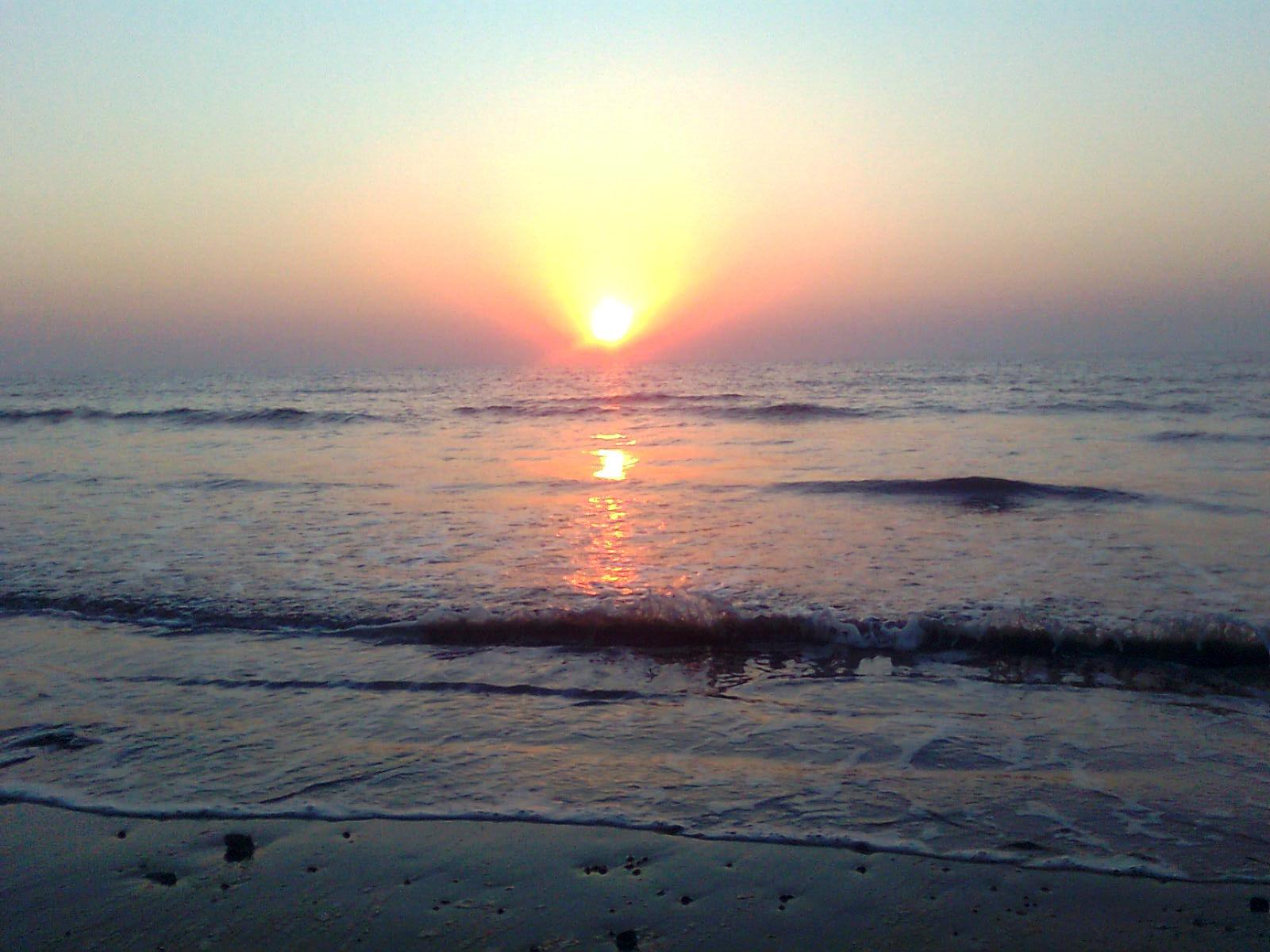

Mandvi Beach
The Mandvi beach is a stretch of golden-brown sand located at the southernmost point of Gujarat’s Kutch district. It is located south of the main intersection, Bhuj. The beach is located in the same town as its name, which historically had a busy port serving India. The historic part of the town still has the fort wall from the former trading centre. The serene beach is a welcome addition for visitors to the area. Evenings are especially wonderful because of the sunset and all the activity from snack vendors to balloon vendors.
Brief History:
At the estuary where the river Rukmavati meets the Gulf of Kutch, the Maharao of the princely state of Kutch founded this port town. It was a significant commercial hub during the time. To house the Kharva families, who were known for their expertise in crafting wooden ships, the settlement was constructed inside of a fortified stronghold. The mid-fifteenth century saw the construction of the defensive fortifications. Even though the fortress is no longer very large, parts of it can still be seen.
Main Attractions:
Given that there are numerous water activities available here, it is also the ideal location for adventure seekers. In addition, you may go horseback riding and eat at some of the most mouthwatering food stands that are located along the beach. Its intriguing windmills and rich history are two things you definitely wouldn’t want to miss.
History: Mandvi Beach has a rich history, having been a busy port serving India in the past. The beach is also known as SwamiNarayan Holy Beach, and it is said that God Swaminarayan and His great saints had taken bath there before 175 years ago.
Facilities: The beach offers basic water sports and ATV facilities, making it an exciting spot for adventure seekers. Visitors can also enjoy yoga and meditation sessions to the tune of the gentle sea.
Food and Drink: The beach offers a range of delicious tandoori snacks and food, including coconut water and other refreshing drinks.
Accommodation: Visitors can choose from a range of accommodation options, including beachside resorts and camping facilities.
Pingleshwar Beach
Near to Mandvi Kutch, Pingleshwar Beach is a fantastic tourist destination. This Kutch beach’s golden sands are worth visiting, to fully savour special times with your loved ones. It is located close to the Nalia bird sanctuary, around 17 kilometres from the coastal NH 8A. The beach is well known for being a wetland that welcomes migratory birds every year and for featuring stunning wind farms.
Main Attractions:
Due to the nearby Pingleshwar Temple, this location is renowned for its religious significance in addition to its recreational offerings. The captivating beauty and breathtaking sunset make this a must-visit location for all travellers.
Pingleshwar Beach is a serene and picturesque beach located in the Kutch region of Gujarat, near Mandvi. It is a fantastic tourist destination, known for its golden sands and tranquil atmosphere, making it an ideal spot to spend quality time with loved ones.
Location Pingleshwar Beach is situated approximately 17 kilometers from the coastal NH 8A, close to the Nalia bird sanctuary.
Features The beach is famous for its stunning wind farms and is a popular spot for migratory birds. The nearby Pingleshwar Temple adds to the beach’s religious significance, making it a unique destination for both relaxation and spiritual experiences.
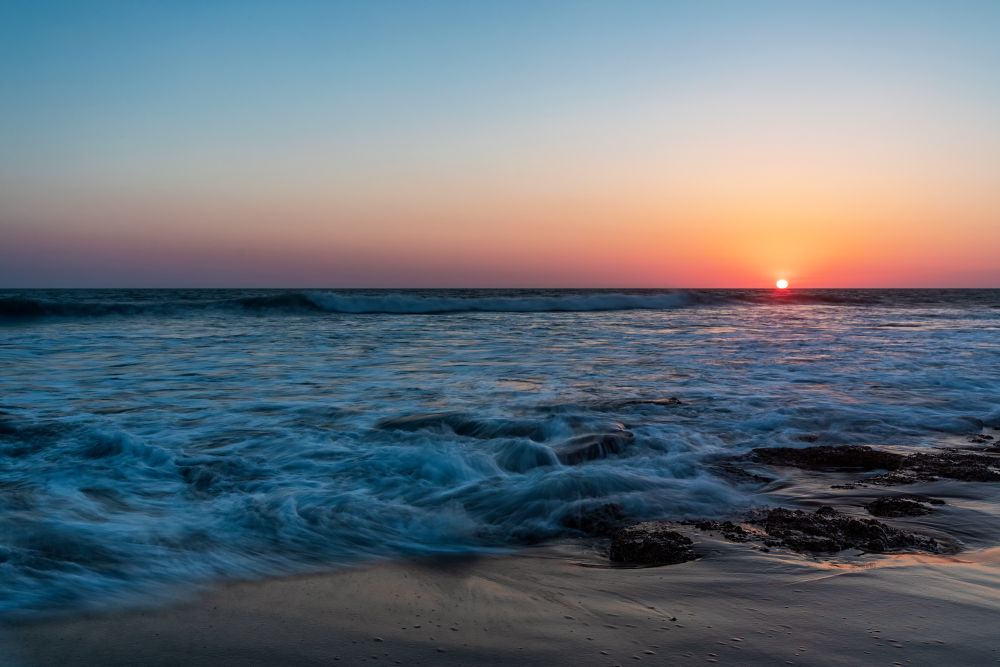
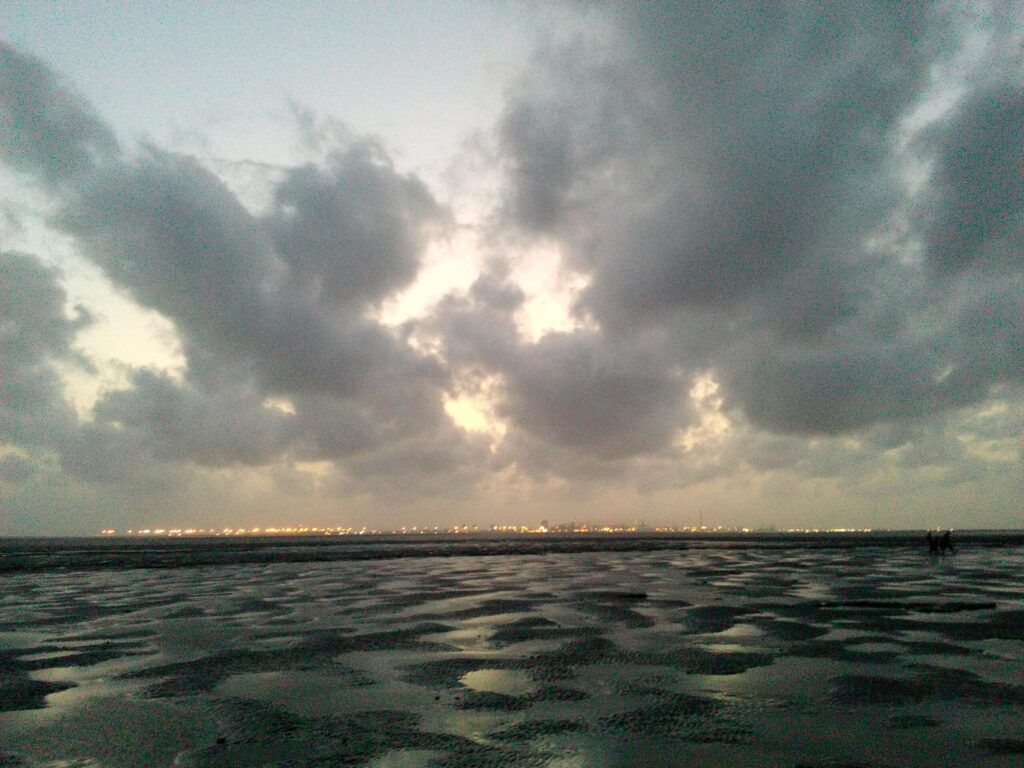
Dumas Beach
The Dumas Beach is in Gujarat, a state in Western India, 13 miles southwest of Surat, along the Arabian Sea. It is without a doubt one of the most picturesque and gorgeous beaches, with black sand all around it.
Main attraction: The beautiful black sand that covers the beach makes it one of the unique destinations for a visit.
One such terror tale is related to the Dumas Beach in Gujarat that many must not be aware of! When it comes to most haunted places in India, generally Bhangarh and Kuldhara (in Rajasthan) and Agrasen ki Baoli in Delhi cover the prime spots on the list. However, the story of Dumas Beach is equally realistic and haunting.
While this beach must look like God’s home during the day time, it becomes devil’s paradise after the sun goes down. One of the premium tourist attractions in Surat, this beach is visited by hordes of travellers and tourist every day but as it starts getting dark, people leave the place for better good. And those who tried to challenge the beach by staying overnight, they either never came back or had worst experiences to share.
The mystery surrounding the Dumas Beach
Located along the Arabian Sea, Dumas Beach is considered one of the most haunted places in Gujarat. The beach is renowned for two things, one for its black sand and other for being haunted! It is said that Dumas Beach was once used as a Hindu burial ground and hence is possessed by several haunting spirits that never left the region. Folklore explains that the existence of black sand is because of amount of ash created by burning the dead which got mixed with white sand of the beach and turned dark in shade.
Fact or fiction?
There’s no denying that the beach has an eerie feel to it. The surroundings are beautiful but hauntingly depressing, and you cannot escape the negativity that surrounds the place. A number of paranormal activities have been reported in the area after the moon shows up. If reports are to be believed, several tourists and locals have gone missing from Surat’s haunted beach, Dumas. Also, a man was found dead on the beach with his tongue popping out. And there is absolutely no one who could explain the reason behind all these mishaps.
People also claim that they heard weird sounds coming from the beach, like people laughing and someone crying, even when there’s not a single soul present. Not only this, locals also say that they have witnessed white apparitions and moving orbs along with myriad other mysterious activities that can’t be explained.
How to reach Dumas Beach
Reaching Dumas Beach is quite easy as there are various ways of getting here. The beach is located at a distance of around 20 km from Surat city and it takes just half an hour to get here. A number of local transports are available from the city for Dumas Beach.
Suvali Beach
A tranquil and serene beach, Suvali Beach, is located 20 kilometres from Surat. The beach, which is primarily frequented by loners seekers of solitude, is steadily becoming a popular tourist destination. The spotless beach, which is outside the city centre, provides city dwellers and other tourists with the ideal escape from the shrill noise and hectic pace of the metropolis.
Suvali Beach is a beautiful beach in the Suvali village of Gujarat, India. This beach is one of the most visited tourist destinations in the region and is known for its pristine and serene surroundings. The beach is situated around 20 kilometres from the city of Surat and is easily accessible by road.
The beach is surrounded by greenery and the clear blue waters of the Arabian Sea, making it a perfect destination for nature lovers. The long stretch of white sand on the beach is ideal for long walks and the cool sea breeze. The beach also offers adventure enthusiasts various activities like surfing, swimming, and boating.
There are several places to visit near Suvali Beach, including the Surat Castle, a historical monument built during the Mughal era. The castle is a perfect example of Mughal architecture and is an important tourist destination in the region. Another popular tourist spot near Suvali Beach is Dumas Beach, known for its black sand and in Surat.
There are many things to do at Suvali Beach, including picnicking, sunbathing, and beach volleyball. Visitors can also indulge in various water sports, such as jet skiing, parasailing, and speed boating. The beach is also a popular destination for kite-flying enthusiasts, especially during the annual kite festival held in the region.
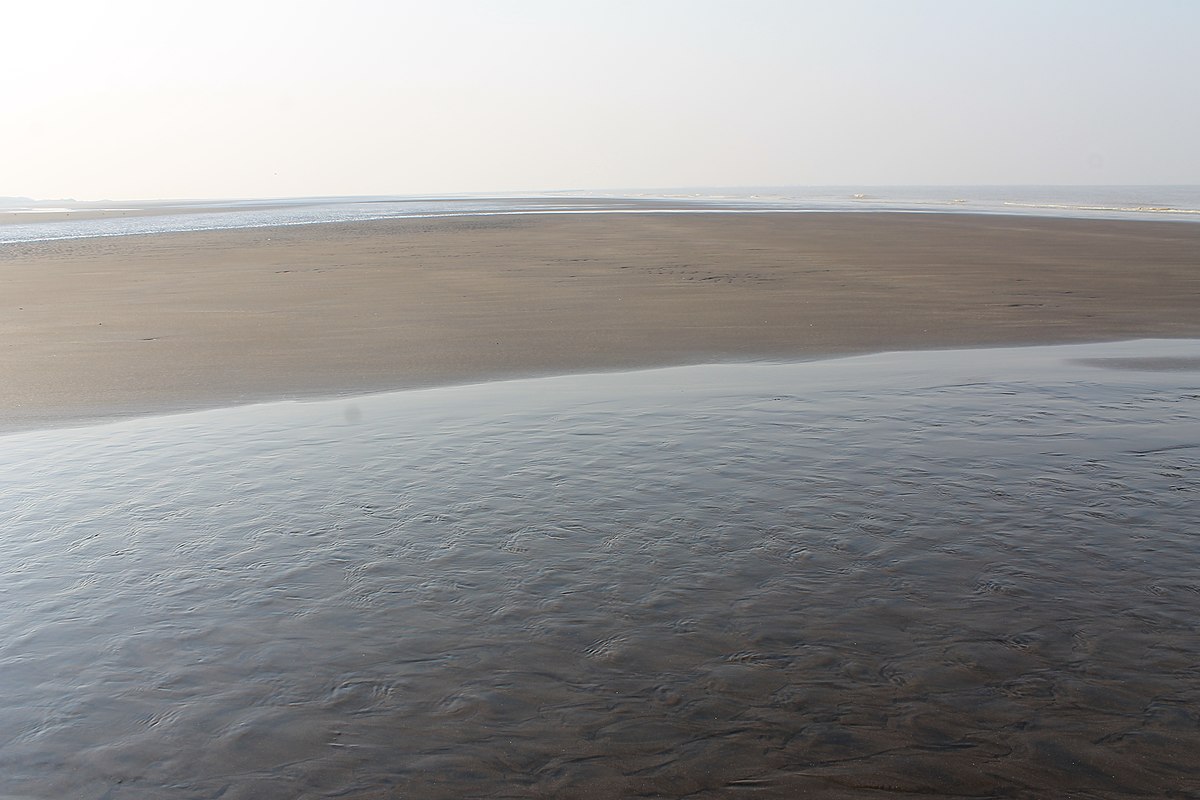
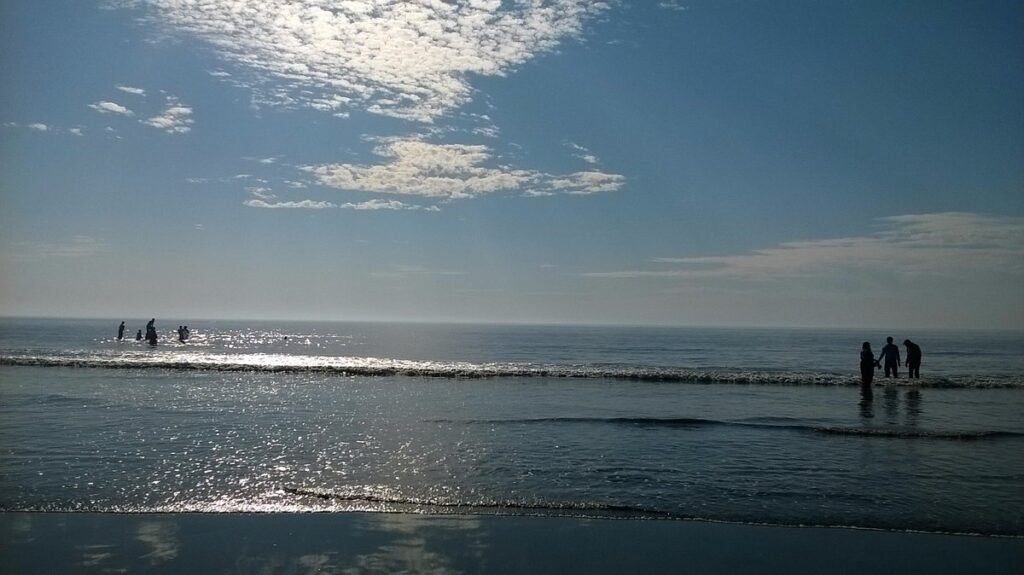
Dandi Beach
Brief History: Dandi had a significant historical role in India struggle for independence from British rule. Mohandas Karamchand Gandhi started the Dandi March, also known as the Salt March, which was an act of civil disobedience in colonial India. All locals operations to produce salt were ruled illegal once the British government instituted a salt tax, which was a flagrant infringement of the peoples rights. In 1930, Dandi became famous and earned historical significance when Mahatma Gandhi decided to stage aprotest there against the imposition of a salt tax.
Main attraction: It is a favourite destination for tourists due to its stunning beauty andextensive history. Dandis lengthy and storied history surpasses only its tranquil andunspoiled beauty. This beaches endless stretch of sand creates a stunning contrast withthe sky sapphire hue.
Scenic Beauty
The beach is known for its stunning beauty, with golden sand and crystal-clear waters. It is a popular spot for relaxation and recreation, with visitors coming to enjoy the sun, sand, and sea. The beach is also a great spot for photography, with its picturesque views and serene atmosphere.
Tourist Information
- Location: Dandi Beach is located in Navsari, Gujarat, India.
- Distance: The beach is approximately 64 km from Surat railway station and 55.9 km from Surat Airport.
- Best Time to Visit: The best time to visit Dandi Beach is during the winter months (October to February), when the weather is mild and pleasant.
- Entry Fee: There is no entry fee to visit the beach, but visitors may need to pay for parking and other amenities.
- Reviews: Dandi Beach has a rating of 4.5 out of 5 stars on Tripadvisor, based on 62 reviews.
Things to Do
- Relaxation: Visitors can relax on the beach and enjoy the scenic views.
- Swimming: The beach is suitable for swimming, but visitors should exercise caution and follow safety guidelines.
- Photography: The beach is a great spot for photography, with its picturesque views and serene atmosphere.
- History: Visitors can learn about the history of the beach and the Salt Satyagraha movement at the nearby museum.
Ahmedpur Mandavi
The 6-kilometer-long Ahmedpur Mandvi Beach is a spotless stretch of land that the Arabian Sea glistening waters lap. The beach, which boasts of fine white sands and is located at the intersection of Diu and Gujarat, is peppered with windmills .The beach is popular year-round among tourists and is great for swimming, water sports, and watching dolphins.
Main attraction: Along with a nice sandy beach, Ahmedpur Mandvi Beach offers somebreathtaking views of the Arabian Sea. This beach features a variety of water activities to satisfy your daring soul in addition to the visual beauty.
Situated at the border of Diu and Gujarat, Ahmedpur Mandvi beach is a 6 km long stretch where the pristine water of the Arabian Sea adjoins the seashore. It’s a coastal town, popular for its beach and other tourist attractions. Embraced with white sands and fishing villages, it is an idyllic location for honeymoon couples, beach lovers and adventure buffs. It is beautifully besieged by windmills on the one hand and blue water on the other. Visitors can view the architectural instances of temples, mansions, bungalows that were once ruled by the kings.
Holiday trip to Ahmedpur Mandvi beach is a wonderful experience for the beach lovers and adventure enthusiasts as this place has white sand for romantic strolls and breathtaking blue water, which is extremely captivating for swimming. From slugging on a hillock to bathing in its pure waters, this beach also attracts its visitors with adventure water sports activities, dolphin sightings and speed boat trips. It offers a perfect blend of cultures and every festival & fairs are celebrated with great joy. Including all these, this place also holds assure for Shopaholics. In short, it’s one of the popular weekend getaways for beach lovers as this beach serves as an idyllic picnic spot.
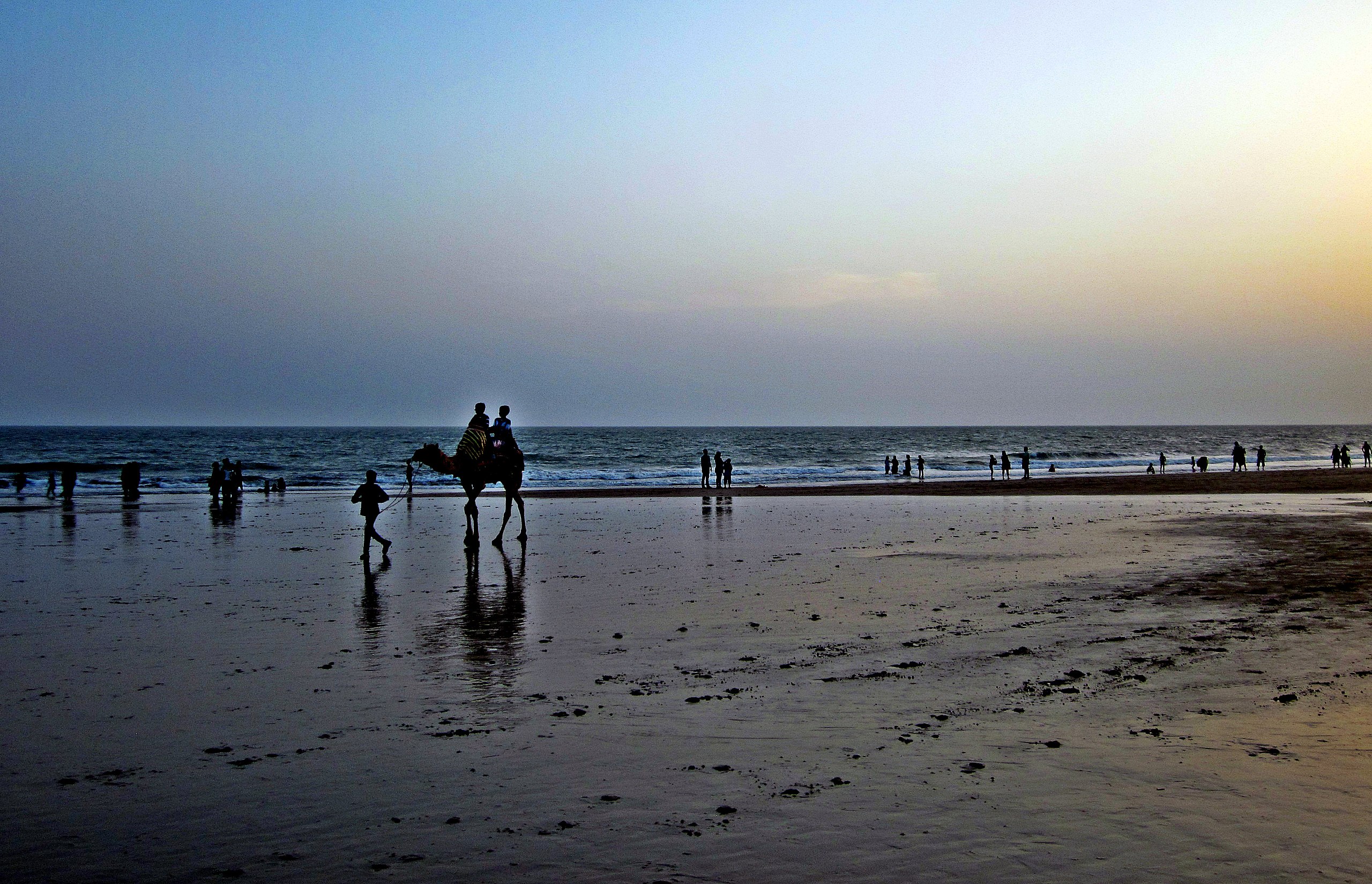

Okha Madhi Beach
Mahuva is a town on the Arabian Sea coast in the Gujarat district of Bhavnagar, located 96 kilometres from Bhavnagar. It is among the lovely spots to visit close to Bhavnagar.
Brief History: Gujarats Bhavnagar district has the little city of Mahuva as one of its suburbs. It is well-known for its pleasantly cool climate all year long and lush, verdant surroundings, which include numerous plantations of coconut trees. This city is home to the well-known preacher Morari Bapu.
At a distance of 25 km from Dwarka and 78 km from Porbandar, Okha Madhi Beach is a pristine beach on the Arabian Sea coast near Okha Madhi village in Gujarat. Located on Dwarka – Porbandar Highway, it is one of the secluded beaches in Gujarat and among the best places to visit in Dwarka.
Okha Madhi or Madhi is a beautiful coastal area located between Bhatiya and Dwarka and is very isolated marine site. If you are looking for the less crowded beach then Okha Madhi or Nexon Beach is the best place for you. The tidy, long beach with thunderous waves, golden sands, coral reefs and clean blue water is an ideal destination to have fun with family and friends in peace. Also known as Bechtel Beach, this beach is famous for turtle conservation.
Swimming is not safe at this location as tides are really huge at times. Being a secluded place, there is no shops so better to carry water and snacks. Hotels are available within a few kilometers.
Mahuva Beach
Gathiya is a tea-time snack. It is primarily made of besan or gram flour. It is like a thicker sev, however, there are a few notable differences. There are usually two kinds of Gathiya: Tikha (spicy) Gathiya and regular Gathiya. The difference is in terms of the spices used in the dough. The regular one has carom seeds, salt, turmeric, soda bicarb, and a dash of oil. Tikha has additional spices like black pepper and red chilli powder. The dough is then made to pass through a mould, making its strands, straight into the oil for deep frying. The end result is not crunchy, but a bit soft. Must try, for sure!
At a distance of 96 km from Bhavnagar, Mahuva is a town on the Arabian Sea coast in Bhavnagar district of Gujarat. It is one of the beautiful places to visit near Bhavnagar.
Often called the Kashmir of Saurashtra, Mahuva is known for its mild weather and lush green surroundings. Tourists are primarily attracted to the beach in the town. Mahuva Beach is well known for its tranquil waters and natural beauty. The beach is also called as Bhavani Beach owing to the ancient Bhavani Mata Temple located atop a dune in its sandy shores. The area surrounding the beach and the township is incredibly verdant and the countryside is dotted with coconut and palm trees offering the perfect ambiance for relaxation to visitors. One can take a dip in the cool waters of the Arabian Sea and go for a long walk along the shoreline in order to fully rejuvenate oneself.
Besides, Mahuva is home to a thriving agribusiness industry, with an emphasis on enterprises that dehydrate vegetables such as garlic and onions for use in processed foods. The place is also the residence of the Hindu preacher Morai Bapu. One can also visit Timbi Hanuman Temple and Pingleshwar village which is known for housing an ancient Shiv Linga submerged in the sea.
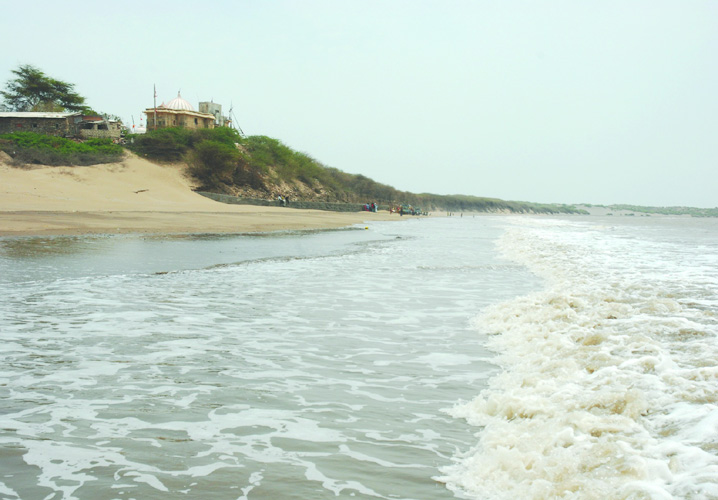

Leather Work
The indigenous community of Meghwals are prime producers of leather work in the Kutch district of Gujarat. This is one of those timeless crafts which has grown to combine traditional methods of design with modern functionalities. Its production is a combined effort between men and women. The men fashion the product from the leather while the women embellish it with mirrors and bead work. Originally, the craft was used to make saddles for elephants and horses, sword sheaths and accessories for war. Today, it is used to make beautiful bags and shoes with colourful tassels and embellishments.
Gujarat is a significant hub for leather work in India, with numerous companies and manufacturers based in the state. Here are some key details about leather work in Gujarat:
- Companies: There are many companies in Gujarat that are involved in the manufacturing and trading of leather products, including shoes, bags, belts, and other accessories. Some of the notable companies include Cyber Octet Pvt Ltd, which provides cyber security services, and various manufacturers of metal key chains, promotional gifts, and corporate gifts.
- Manufacturing: Gujarat is home to a large number of manufacturing units that produce leather products, including leather sheets, cushion covers, chair pads, sofa sets, and iron board covers. These products are made from high-quality leather and are exported to various countries around the world.
- Export: Gujarat’s leather industry is a significant contributor to the state’s export revenue. The state’s leather products are exported to countries such as the United States, Europe, and Asia.
- Raw Materials: Gujarat is also a major producer of raw materials such as hides and skins, which are used in the production of leather products.
- Employment: The leather industry in Gujarat provides employment opportunities to thousands of people, both directly and indirectly.
- Government Support: The government of Gujarat provides support to the leather industry through various initiatives, including training programs, infrastructure development, and trade facilitation.
Rogan Painting
This craft is a form of surface embellishment and practiced for over hundred years, but now by only a single family in Nirona, Kachchh. A special paste made of castor is used in this craft. Castor seeds are hand-pounded to extract the oil and turned into a paste by boiling, Colored powder diluted in water is then mixed with this. The pastes of different colors yellow, red, blue, green, black and orange are stored in earthen-pots with water to prevent them from drying up. The kalam, an iron rod, flat at both ends, is used to paint half the design with the support of the fingers of the left hand.
Rogan painting is a traditional art form of Gujarat, India, that has been around for over 400 years. It is a method of cloth painting that uses a thick paste of castor oil and natural colors to create intricate designs and patterns on fabric.
Origin and History
Rogan painting originated in the Kutch district of Gujarat, India, and is believed to have been brought to the region by Muslim Khatris from Iran. The art form was initially practiced by the Muslim Khatris community and was mainly used to decorate clothing and other textiles for special occasions such as weddings.
Traditional Techniques
The traditional technique of Rogan painting involves applying a small amount of paint paste to the palm of the hand and then twisting it across the cloth to create intricate designs and patterns. The paint is made from a mixture of castor oil and natural colors, and the artisans use a metal rod to guide the paint onto the fabric.
Designs and Motifs
Rogan painting is known for its intricate designs and motifs, which are often inspired by traditional Persian designs. The most famous design in Rogan painting is the “Tree of Life,” which is a symbol of prosperity and good fortune.
Revival and Contemporary Scene
In the late 20th and early 21st centuries, Rogan painting experienced a revival, thanks in part to the efforts of artisans such as Abdulgafur Khatri, who began training women in the art form. Today, Rogan painting is practiced by several families in the Nirona village of Kutch, Gujarat, and is considered a valuable part of the region’s cultural heritage.
Contemporary Products
Artisans in Gujarat have introduced contemporary products to appeal to tourists, including lehengas, wallets, bags, cushion covers, tablecloths, wall hangings, pillow covers, and Rogan art sarees. The tree of life continues to be a major motif, and the art form has become a popular tourist attraction.
Training and Preservation
In an effort to preserve this traditional art form, artisans in Gujarat have begun training women in the art of Rogan painting. This has helped to increase the number of artisans practicing the art and has also helped to ensure its survival for future generations.
Conclusion
Rogan painting is a unique and traditional art form of Gujarat, India, that has been around for over 400 years. Its intricate designs and motifs are a testament to the skill and craftsmanship of the artisans who practice this art form. With its revival and contemporary products, Rogan painting is an important part of Gujarat’s cultural heritage and a popular tourist attraction.
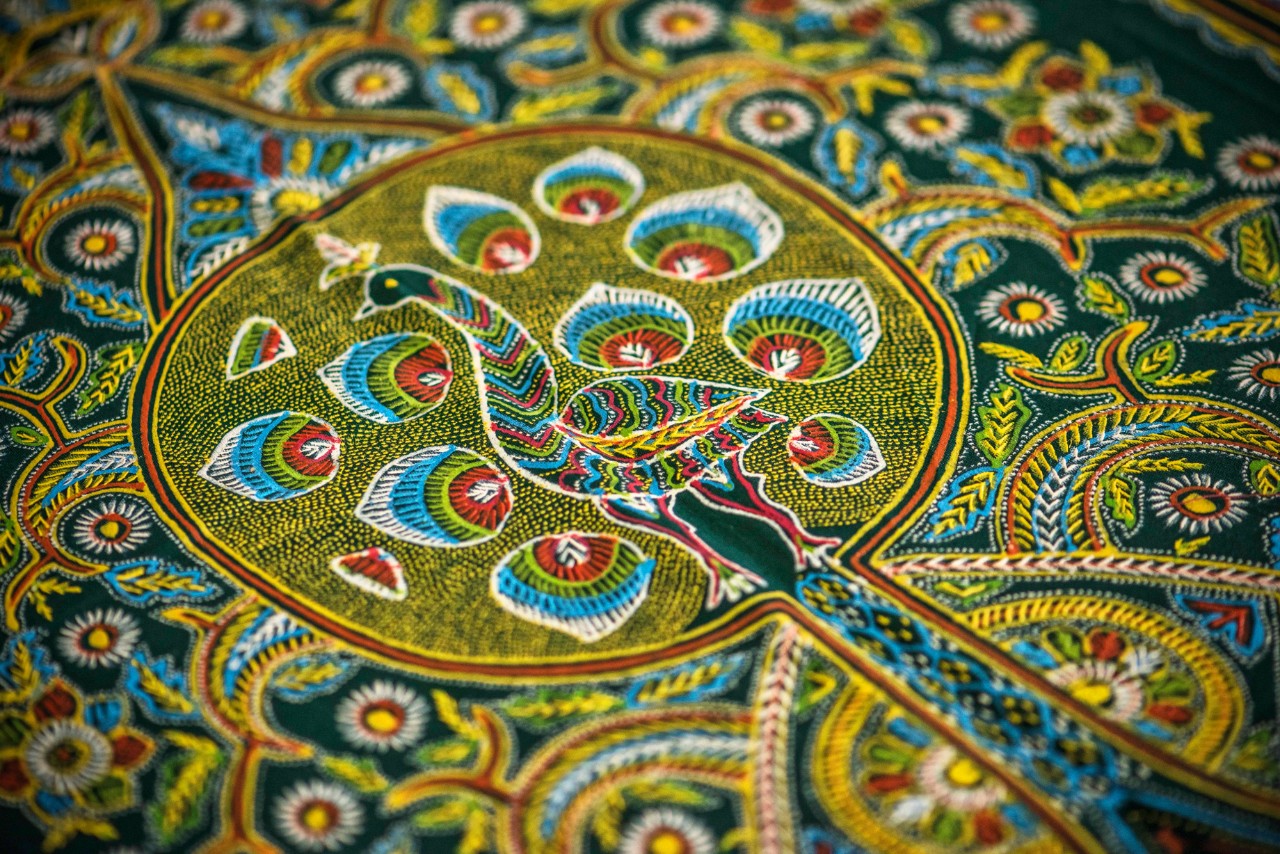
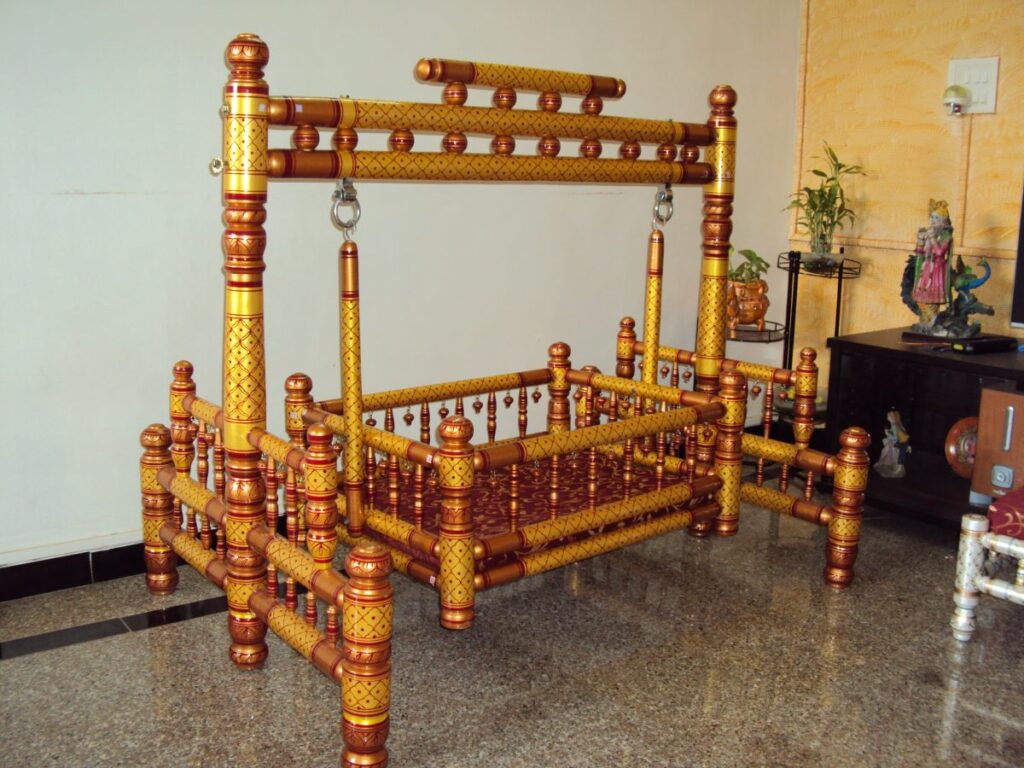
Sankheda Furniture (Sankheda)
Gujarat is no stranger to the labour of hammering, forging and casting that goes into producing pieces of metal. The state has been home to metal work for hundreds of years and today, you’ll find these stunning pieces in different corners of the world. These include statues, vases, utensils, ornaments, jewellery and furniture that boast of ornate designs. The Kutch specialty is silver jewellery renowned for its intricate handiwork. Besides silver, craftsmen use iron, copper and brass to cast some exquisite artefacts. The metal work reflects the finesse of artists who have spent years perfecting the craft.
A craft tradition so deeply inherent in the collective identity of the practitioners, that their town is named after it. Sankheda, a small town in the eastern region of Gujarat derives its name from ‘sanghedu’, the word for a lathe in the Gujarati language.
Lacquered turned wood furniture with hand painted motifs and traditional method of ornamentation, popularly known as Sankheda furniture, is thought to have been produced here from about 1855. In this town, about 80-100 families belonging to the “Kharadi-Suthar”community are involved in this craft, giving them a strong sense of community identity and continuity.
Every year, on the ‘Maha sud Teras’ day in February, the entire ‘Kahardi-Suthar‘ community, along with the ‘Sonis’ (jewellers), ‘Luhars’ (metal workers) and ‘Kumbhars’ (potters) comes together to worship lord‘Vishwakarma’ , the presiding Hindu deity of all craftsmen and architects, and celebrate and pray for the well-being of the community and the progress of their craft.
Single Ikat
Single Ikat is a style of interweaving tied and dyed warp with plain weft in a single textile form. Single Ikat sarees from the Rajkot region of Gujarat are much in demand for their simple elegance. The single ikat style of weaving is much simpler than the double ikat style, and hence sold at cheaper prices. This makes it a more affordable range of products. The single ikat style is commonly used to make sarees, kurtas, bedsheets and linen.
Single Ikat is a type of weaving technique where only the warp is resist-dyed, unlike double ikat where both the warp and weft are dyed. This traditional art form is still thriving in Gujarat, particularly in the city of Patan.
Characteristics of Single Ikat Weaving in Gujarat
- Only the warp is resist-dyed, making it a more labor-intensive process.
- Requires great skill and precision to produce intricate patterns.
- Typically used for creating prestigious cloths to be worn on auspicious days.
- Single Ikat is considered the premiere form of ikat weaving, requiring the most skill and labor.
Garvi Gurjari Handicrafts & Handloom Emporium
Garvi Gurjari is a government-run enterprise that markets handloom and handicraft products from Gujarat. They offer a range of Single Ikat products, including dupattas and other clothing items.
Buy Garvi Gurjari Single Ikat Products
You can purchase Garvi Gurjari Single Ikat products online from Amazon.in or other authorized retailers. These products are handmade by skilled artisans and weavers associated with the Gujarat Government.
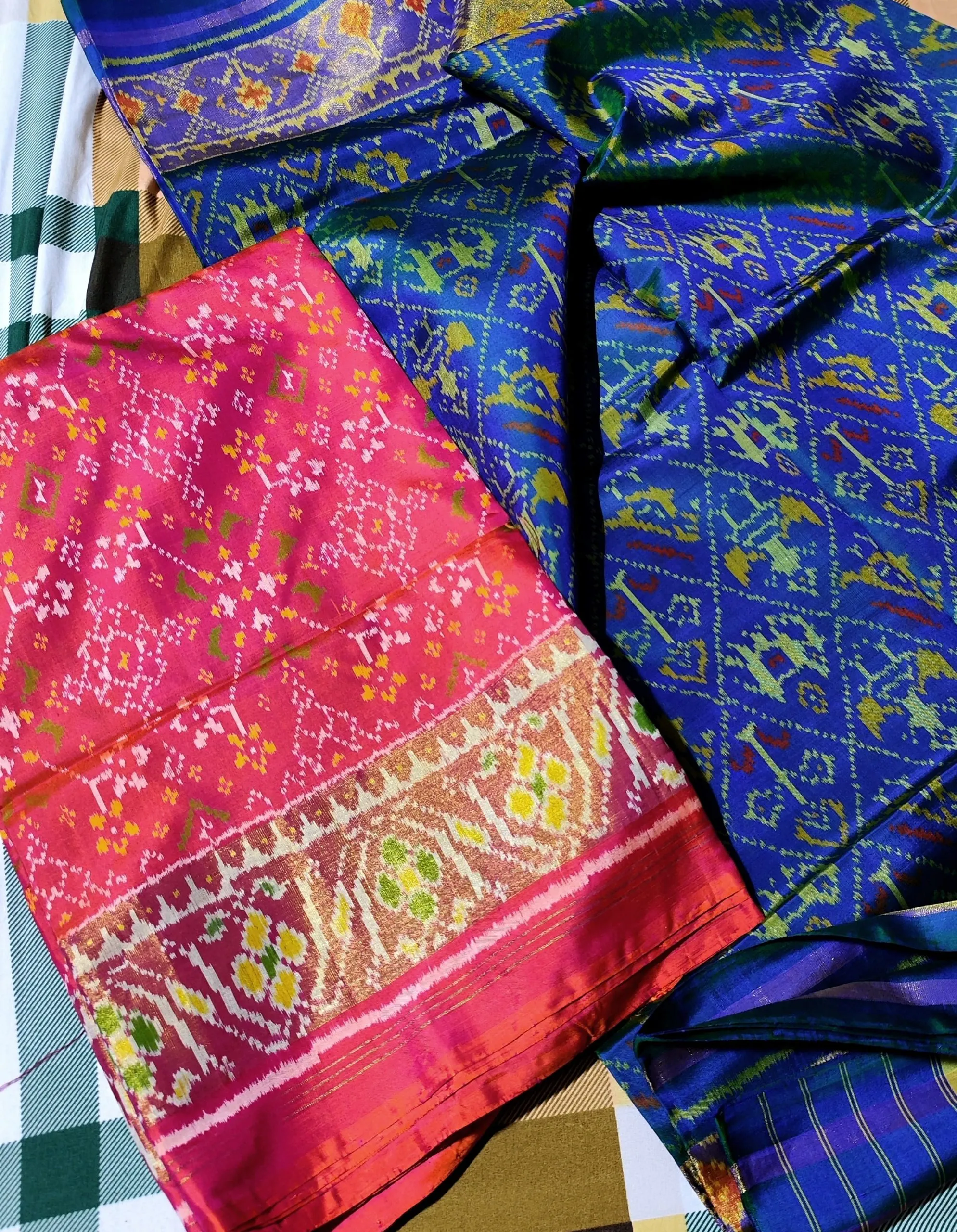
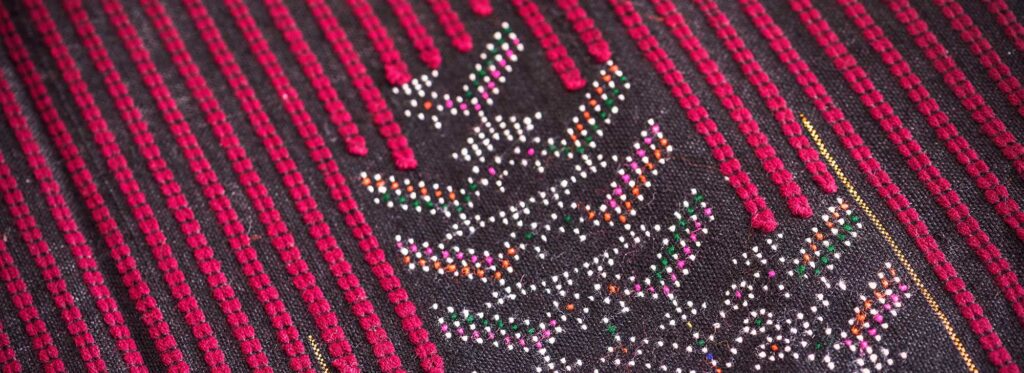
Tangaliya
This 700-year-old weaving craft is native to the Dangashiya community of Surendranagar, Gujarat. The community consists of weavers and shepherds. The weavers make the blankets out of sheep and goat wool for the shepherds to wear. The threads are woven to create the signature style of the weaving technique which is the effect of raised dots on the fabric. Together, they create beautiful geometrical patterns. Today, these textiles are used to make dupattas, dress material, bedsheets and pillow covers.
History and Origin
The exact details of the origin and evolution of Tangaliya craft are not available due to a lack of historical references. However, it is believed to have originated when a boy from a shepherd community married a girl from a weaver community and started weaving shawls using wool from his sheep.
Weaving Technique
Tangaliya weaving is a labor-intensive and time-consuming process. The contrasting colored threads are twisted into groups of 4-5 warps to create dana or beadwork. Geometric motifs are very sturdy for the rest of their lives, but give the impression of intricate weaving.
Products
Tangaliya is primarily used to create shawls, scarves, and other textiles. The shawls are made using yarns made from the wool of sheep in the Surendranagar district of Gujarat.
Pithora Painting
These wall murals are created as offerings to Pithora, the God of food grains. They are only painted by men commonly in the Chhotaudepur area of Gujarat. These simple paintings are traditionally done to seek blessings before a special occasion such as a wedding, the birth of a child or a festival. The paint is prepared by mixing pigments with milk and liquor prepared from the mahuda tree. Painters use a combination of bamboo sticks, cotton and wooden stencils to create their art. Although it is traditionally practiced only as wall art, today’s generation of pithora painters use paper and canvas that they sell commercially.
Pithora painting is a traditional folk art form of Gujarat, India, practiced by the Rathwa, Bhils, and Bhilala tribes. This ritualistic painting is done on walls, typically by men, as an offering to Pithora, the God of food grains.
History and Significance
Pithora paintings have a long history, dating back to cave paintings thousands of years old. The Rathwa community, who live in the region bordering Gujarat and Madhya Pradesh, have a deep social relevance attached to this art form. The paintings are characterized by the seven horses representing the seven hills that surround the area where the Rathwas reside.
Artistic Style
Pithora paintings are unique and have no two similar designs. The artists use a combination of bamboo sticks, cotton, and wooden stencils to create their art. The backgrounds are usually white or cream, but can be stark red for a rustic mud color appeal. The paintings have become fashionable in urban areas and are sold commercially on paper and canvas.
Traditional Practices
Traditionally, only men, called “Lakhindra,” are involved in painting. Unmarried girls can participate in plastering the background with dung, water, and chuna. The head priest, called “Bhadvo,” is a male shaman who is involved in the painting process.
Ritualistic Significance
Pithora paintings are created as offerings to Pithora, the God of food grains. They are typically painted before special occasions such as weddings, births, or festivals. The paintings are believed to bring peace, prosperity, and happiness to the family.
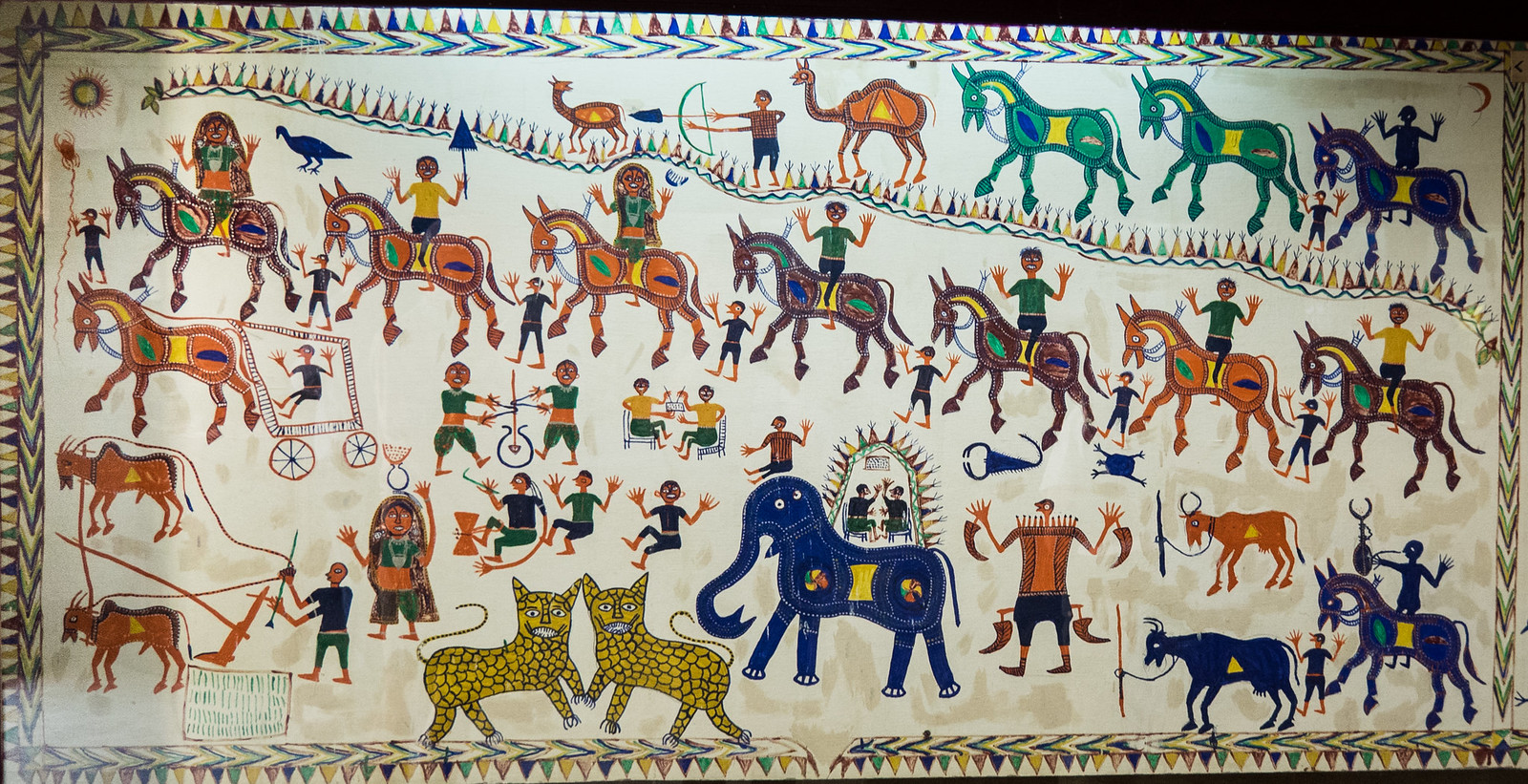

Bead Work
This simple craft is popularly practiced in Junagadh, a region most famous for its 19th century mausoleum ‘MahabatMaqbara’. It is also practiced in the Saurashtra region, Rajkot, Amreli and Ahmedabad. Gujarat can proudly be called the centre for bead craft in India. Local craftsmen make delicate household decorative items using beads as well as beautiful pieces of jewellery by string multicoloured beads together.
Pithora painting is a traditional folk art form of Gujarat, India, practiced by the Rathwa, Bhils, and Bhilala tribes. This ritualistic painting is done on walls, typically by men, as an offering to Pithora, the God of food grains.
History and Significance
Pithora paintings have a long history, dating back to cave paintings thousands of years old. The Rathwa community, who live in the region bordering Gujarat and Madhya Pradesh, have a deep social relevance attached to this art form. The paintings are characterized by the seven horses representing the seven hills that surround the area where the Rathwas reside.
Artistic Style
Pithora paintings are unique and have no two similar designs. The artists use a combination of bamboo sticks, cotton, and wooden stencils to create their art. The backgrounds are usually white or cream, but can be stark red for a rustic mud color appeal. The paintings have become fashionable in urban areas and are sold commercially on paper and canvas.
Traditional Practices
Traditionally, only men, called “Lakhindra,” are involved in painting. Unmarried girls can participate in plastering the background with dung, water, and chuna. The head priest, called “Bhadvo,” is a male shaman who is involved in the painting process.
Ritualistic Significance
Pithora paintings are created as offerings to Pithora, the God of food grains. They are typically painted before special occasions such as weddings, births, or festivals. The paintings are believed to bring peace, prosperity, and happiness to the family.
Ari Embroidery
This complex style of embroidery is commonly applied on silk fabric. Ari embroidery is highly stylised and artisans create delicate patterns that boast of their fine skill. It can even be said that each design spills out on fabric like a dreamy poem on paper. The fabric is usually held on a frame and the embroidery is done using a long needle with a hook at the end. You’ll find this on blouses, sarees and other garments and might include the addition of pearls, beads and sequins.
Ari embroidery of Gujarat is a traditional embroidery style that originated in the state of Gujarat, India. It is done using a hook-like needle called an “ari” on fabric stretched on a frame or “adda”. This style was earlier practiced by the Mochi community on leather, but later women of the house started practicing it on fabric.
Key Features
- The ari needle is used to create continuous fine chain stitches.
- The silk thread is fed from below, creating loops that lead to the line of chain stitches.
- The intricacy and use of beads add an added appeal to the embroidery.
- The fabric is usually held on a frame, and the embroidery is done using a long needle with a hook at the end.
History and Significance
Ari embroidery is a traditional craft that has been passed down through generations in Gujarat. It is known for its intricate designs and fine chain stitches, which are created using the ari needle. The embroidery is often used to adorn traditional clothing, such as saris and lehengas, and is a symbol of cultural heritage and tradition.
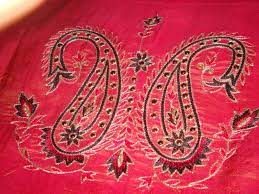

Applique Work
This is one of Gujarat’s oldest and finest crafts. The art form uses different patches of fabric in various colours and patterns that are placed together to create a multicoloured fabric much like a jigsaw puzzle. The work is used to create attractive, vibrant quilts, wall hangings, linen and clothing. The craft is popular in the Saurashtra, Banaskantha, Patan and Kutch regions of Gujarat.
Applique work is a traditional craft in Gujarat, India, that has been passed down through generations. The word “applique” comes from the French verb “appliquer,” meaning “to put on.” This ancient needlework practice involves stitching or bonding small pieces of fabric onto a larger fabric base to create intricate designs and patterns.
History of Applique Work in Gujarat
The history of applique work in Gujarat dates back to the times when women from native communities in north Gujarat produced large canopies, hangings, and friezes with human and animal figures stitched on them. The craft has evolved over time, with different regions in Gujarat developing their unique styles and techniques.
Types of Applique Work in Gujarat
There are several types of applique work in Gujarat, including:
- Patchwork: This involves sewing together small pieces of fabric to create a larger design or pattern.
- Applique: This involves stitching or bonding small pieces of fabric onto a larger fabric base to create intricate designs and patterns.
- Reverse Applique: This involves cutting out shapes from the surface fabric to create a design or pattern.
Designs and Patterns
Applique work in Gujarat is known for its vibrant colors and intricate designs. Traditional motifs include elephants, parrots, peacocks, flowers, and creepers. The designs and patterns used in applique work in Gujarat are often inspired by mythology and folklore.
Khadi
Khadi is a hand-woven natural fibre cloth that’s mainly made of cotton. The Surendranagar district of Gujarat has one of the largest handloom clusters in Gujarat where khadi can be bought in bulk at the bustling markets.The cloth is symbolic of India’s freedom movement and was introduced with the intention of people boycotting foreign goods during the national freedom movement. The material is known for its durability, comfort and ability to keep the wearer warm in winter and cool in summer.
Khadia is a location in Ahmedabad, Gujarat, India. It is situated in the state of Gujarat, which is known for its rich cultural heritage and textile industry. The official languages spoken in Khadia are Gujarati and Hindi, and the time zone is UTC+5:30 (IST). The PIN code is 380001, and the vehicle registration plate is GJ-1.
Gujarati Kadhi Gujarati kadhi is a popular dish from Gujarat, made with gram flour, spices, herbs, and seasonings. It is a sweet and tangy yogurt-based dish that can be served with steamed basmati rice or roti. This easy recipe is a quick and comforting option for lunch or dinner.
Khadi Khadi is a hand-woven natural fiber cloth made mainly from cotton. It is a symbol of India’s freedom movement and was introduced to promote self-sufficiency during the national freedom movement. Khadi is sometimes starched to give it a stiffer feel and is widely accepted in various fashion circles.
Khadi Gujarat Khadi is a significant part of Gujarat’s textile industry, with the Surendranagar district having one of the largest handloom clusters in the state. The cloth is made from cotton, silk, or wool, which are all spun into yarn on a charkha. It is a versatile fabric that remains cool in summer and warm in winter.
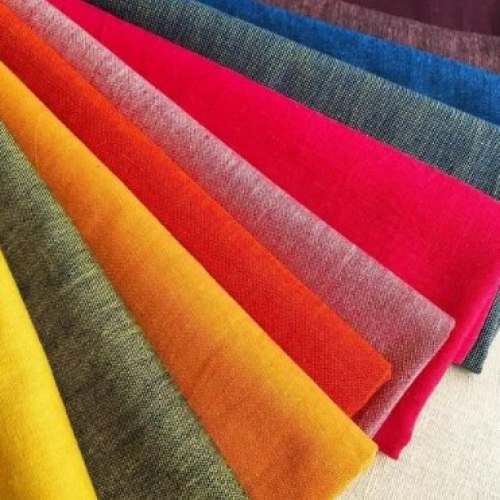

Leather Work
The indigenous community of Meghwals are prime producers of leather work in the Kutch district of Gujarat. This is one of those timeless crafts which has grown to combine traditional methods of design with modern functionalities. Its production is a combined effort between men and women. The men fashion the product from the leather while the women embellish it with mirrors and bead work. Originally, the craft was used to make saddles for elephants and horses, sword sheaths and accessories for war. Today, it is used to make beautiful bags and shoes with colourful tassels and embellishments.
Gujarat is a significant hub for leather work in India, with numerous companies and manufacturers based in the state. Here are some key details about leather work in Gujarat:
- Companies: There are many companies in Gujarat that are involved in the manufacturing and trading of leather products, including shoes, bags, belts, and other accessories. Some of the notable companies include Cyber Octet Pvt Ltd, which provides cyber security services, and various manufacturers of metal key chains, promotional gifts, and corporate gifts.
- Manufacturing: Gujarat is home to a large number of manufacturing units that produce leather products, including leather sheets, cushion covers, chair pads, sofa sets, and iron board covers. These products are made from high-quality leather and are exported to various countries around the world.
- Export: Gujarat’s leather industry is a significant contributor to the state’s export revenue. The state’s leather products are exported to countries such as the United States, Europe, and Asia.
- Raw Materials: Gujarat is also a major producer of raw materials such as hides and skins, which are used in the production of leather products.
- Employment: The leather industry in Gujarat provides employment opportunities to thousands of people, both directly and indirectly.
- Government Support: The government of Gujarat provides support to the leather industry through various initiatives, including training programs, infrastructure development, and trade facilitation.
Rogan Painting
This craft is a form of surface embellishment and practiced for over hundred years, but now by only a single family in Nirona, Kachchh. A special paste made of castor is used in this craft. Castor seeds are hand-pounded to extract the oil and turned into a paste by boiling, Colored powder diluted in water is then mixed with this. The pastes of different colors yellow, red, blue, green, black and orange are stored in earthen-pots with water to prevent them from drying up. The kalam, an iron rod, flat at both ends, is used to paint half the design with the support of the fingers of the left hand.
Rogan painting is a traditional art form of Gujarat, India, that has been around for over 400 years. It is a method of cloth painting that uses a thick paste of castor oil and natural colors to create intricate designs and patterns on fabric.
Origin and History
Rogan painting originated in the Kutch district of Gujarat, India, and is believed to have been brought to the region by Muslim Khatris from Iran. The art form was initially practiced by the Muslim Khatris community and was mainly used to decorate clothing and other textiles for special occasions such as weddings.
Traditional Techniques
The traditional technique of Rogan painting involves applying a small amount of paint paste to the palm of the hand and then twisting it across the cloth to create intricate designs and patterns. The paint is made from a mixture of castor oil and natural colors, and the artisans use a metal rod to guide the paint onto the fabric.
Designs and Motifs
Rogan painting is known for its intricate designs and motifs, which are often inspired by traditional Persian designs. The most famous design in Rogan painting is the “Tree of Life,” which is a symbol of prosperity and good fortune.
Revival and Contemporary Scene
In the late 20th and early 21st centuries, Rogan painting experienced a revival, thanks in part to the efforts of artisans such as Abdulgafur Khatri, who began training women in the art form. Today, Rogan painting is practiced by several families in the Nirona village of Kutch, Gujarat, and is considered a valuable part of the region’s cultural heritage.
Contemporary Products
Artisans in Gujarat have introduced contemporary products to appeal to tourists, including lehengas, wallets, bags, cushion covers, tablecloths, wall hangings, pillow covers, and Rogan art sarees. The tree of life continues to be a major motif, and the art form has become a popular tourist attraction.
Training and Preservation
In an effort to preserve this traditional art form, artisans in Gujarat have begun training women in the art of Rogan painting. This has helped to increase the number of artisans practicing the art and has also helped to ensure its survival for future generations.
Conclusion
Rogan painting is a unique and traditional art form of Gujarat, India, that has been around for over 400 years. Its intricate designs and motifs are a testament to the skill and craftsmanship of the artisans who practice this art form. With its revival and contemporary products, Rogan painting is an important part of Gujarat’s cultural heritage and a popular tourist attraction.
